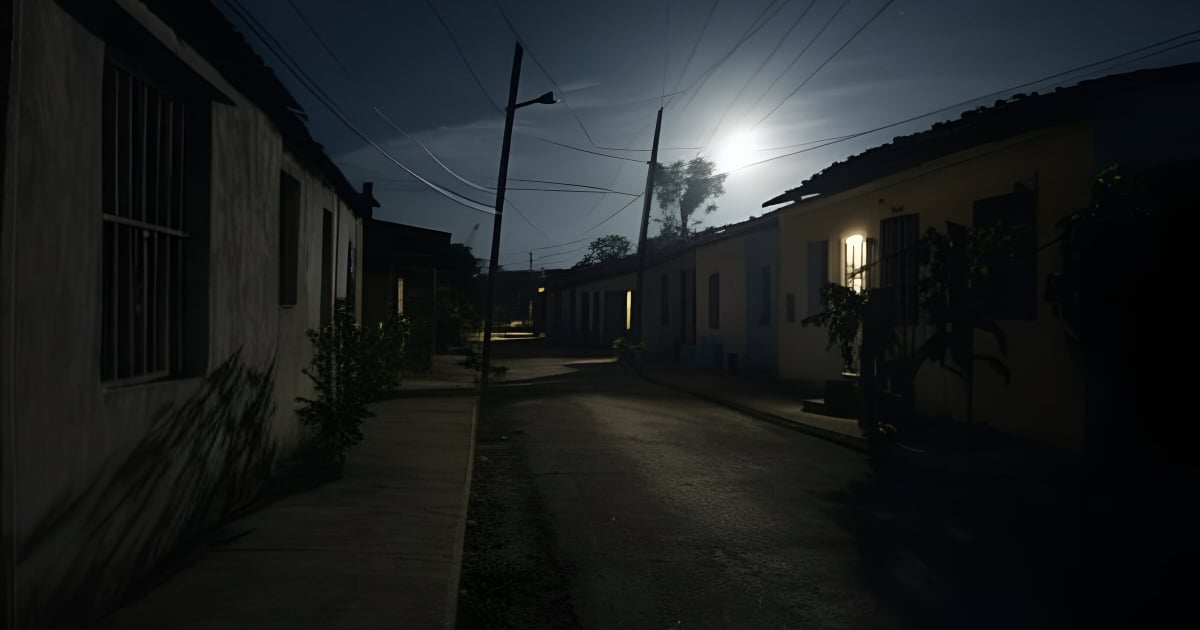The Cuban Electric Union (UNE) has announced that the nation is grappling with another series of power disruptions due to a generation shortfall surpassing 1,500 megawatts (MW). This situation indicates that blackouts will persist in the coming hours and days.
According to UNE's report, the electricity service was disrupted from 6:36 a.m. yesterday until 2:59 a.m. today, only to resume outages at 4:48 a.m. The peak outage registered was 1,362 MW at 6:50 p.m.
At 7:00 a.m., the National Electric System (SEN) had an availability of 1,655 MW, while demand reached 2,210 MW, resulting in a 589 MW deficit. By noon, the estimated impact was expected to reach 980 MW.
The energy crisis stems from a combination of factors, including breakdowns, scheduled maintenance, and fuel shortages. Currently, unit 1 of the Santa Cruz Thermoelectric Plant and unit 2 of the Felton Plant are out of service due to malfunctions. Additionally, unit 2 of the Santa Cruz Plant, units 3 and 4 of the Cienfuegos Plant, and unit 5 of the Renté Plant are undergoing maintenance. Limitations in thermal generation amount to 411 MW.
Due to fuel shortages, 65 distributed generation plants, totaling 421 MW, and the Melones Barge with 192 MW, remain out of service, affecting a total of 613 MW.
During peak demand hours, 100 MW in distributed generation engines and six engines at the Melones Barge with an additional 90 MW are expected to be recovered. However, UNE estimates total availability will reach 1,845 MW, while maximum demand could hit 3,300 MW, resulting in a 1,455 MW deficit. This could lead to blackouts of up to 1,525 MW during nighttime hours.
The Antonio Guiteras thermoelectric plant, one of the country's most significant, has been operating at reduced capacity due to boiler failures. At night, the unit achieved 250 MW but had to reduce power to 120 MW due to a "red point" in the boiler, as reported by UNE. Technicians managed to address the issue without halting generation, allowing the load to increase back to 225 MW as a preventive measure.
Official journalist José Miguel Solís relayed statements from engineer Jorge Gómez Sánchez, Guiteras' deputy production director, confirming the repair's success, though the unit will continue to operate at 225 MW until a morning reinspection determines if it's safe to boost power.
The energy crisis has sparked growing discontent among the public, who decry the lack of stable electricity and its impact on everyday life. Social media users have questioned official reports and UNE's management. "How is it possible that Felton and Guiteras were added to the SEN and today's deficit is higher than yesterday's," one user asked. Another remarked, "Either you're lying or the calculations are wrong, and I lean toward the former."
Other Cubans have expressed resignation and frustration over what they perceive as a structural problem with no short-term solution. "The blackouts are here to stay," lamented one user, while another added, "It's better not to comment because it raises my blood pressure and causes chest pain, and every day is a carbon copy of the last."
Social unrest is also evident among those who believe the electrical crisis mocks the populace. "It's an insult to the beleaguered people; what was the point of synchronizing Felton and Guiteras if we're the same or worse off? Everything from UNE is a failure," criticized one netizen. Another questioned the passivity in the face of the situation: "What on earth is this? Guiteras and Felton are online, and we're still over 1,500. People, how long will we endure this? We need to take to the streets to demand our rights."
In January 2025, Cuba experienced blackouts lasting up to 20 hours a day in several provinces. Guiteras has had recurring failures, affecting its generation capacity. In provinces such as Holguín, Camagüey, and Santiago de Cuba, outages have prompted sporadic protests in recent months.
The electrical landscape in Cuba remains uncertain. The lack of generation, instability in thermoelectric plants, and the fuel crisis continue to exacerbate the situation, with no short-term solution from the authorities.
Understanding Cuba's Ongoing Power Crisis
What is causing the power outages in Cuba?
The power outages in Cuba are caused by a combination of factors, including equipment breakdowns, scheduled maintenance, and fuel shortages.
How long are the power outages expected to last?
The duration of the power outages is uncertain, but they are expected to continue in the coming days due to the significant power deficit.
Which areas in Cuba are most affected by the power outages?
Provinces like Holguín, Camagüey, and Santiago de Cuba have been significantly affected, experiencing frequent power outages.
